Products
Product Type
Reduction
Brands
Fiter Media
Reverse Osmosis (20)
Regular price
£449.00
£699.00
Sale price
£699.00
Regular price
Unit price
/
7-stage Deep Filtration Professional UV Sterilizer OLED Smart Display Child Lock Living room Dining room...
Regular price
£219.99
£299.99
Sale price
£299.99
Regular price
Unit price
/
Waterdrop CoreRO Systems Launch Worry-Free Trial Your First Countertop RO Choice Buy C1S Basic Buy...
Regular price
£249.99
£359.99
Sale price
£359.99
Regular price
Unit price
/
4-mode Temperature Options Better meets your water drinking demands. V-heating Technology Instant hot water without...
Regular price
£399.99
£569.99
Sale price
£569.99
Regular price
Unit price
/
Model number WD-K6-W(Also named as WD-KJ-600) Product dimensions 18 x 17 x 7 inches Item...
Reverse Osmosis Water Filter System, 600 GPD, 2:1 Pure to Drain - Waterdrop G3P600
9 reviews
NSF 58 & 372 Certified*
Regular price
£369.98
£549.98
Sale price
£549.98
Regular price
Unit price
/
Model number WD-G3P600 Certification NSF/ANSI 58 & 372 Pure to drain 2:1 Materials System cover:...
Regular price
£249.99
£299.99
Sale price
£299.99
Regular price
Unit price
/
Model number WD-G2P600-W Item weight 20.94 pounds Materials 1. System cover: BPA-free plastic2. Faucet: metal3....
Regular price
£449.00
£699.00
Sale price
£699.00
Regular price
Unit price
/
7-stage Deep Filtration Professional UV Sterilizer OLED Smart Display Child Lock Living room Dining room...
Regular price
£30.98
Sale price
£30.98
Regular price
Unit price
/
Item model number WD-G3-N1CF Certification NSF 58 & 372 Product dimensions 3.3 x 3.3 x...
Regular price
£30.98
Sale price
£30.98
Regular price
Unit price
/
Item model number WD-G3-N3CB Certification NSF 58 & 372 Product dimensions 2.6 x 2.6 x...
2 Years Lifetime WD-G3-N2RO Filter for Waterdrop G3 Reverse Osmosis System
1 review
NSF 58 & 372 Certified*
Regular price
£81.98
Sale price
£81.98
Regular price
Unit price
/
Item model number WD-G3-N2RO Certification NSF 58 & 372 Product dimensions 4.3 x 4.3 x...
Regular price
£95.99
Sale price
£95.99
Regular price
Unit price
/
Item model number WD-G2MRO Flow rate 0.28 GPM Product dimensions(diameter * height): 4.9* 15 inches...
1 Year Lifetime WD-G2CF Filter for Waterdrop WD-G2/ WD-G2P600 Series Reverse Osmosis System
1 review
Regular price
£31.99
Sale price
£31.99
Regular price
Unit price
/
Item model number WD-G2CF Flow rate 0.28 GPM Product dimensions(diameter * height): 4.9*8.1 inches Material...
Want to learn more about reverse osmosis water filter?
What is reverse osmosis water filter system?
Reverse Osmosis System works by using a high-pressure pump to increase the pressure on the salt side of the RO membrane and force the water across the semi-permeable RO membrane, leaving almost all (around 95% to 99%) of dissolved salts behind in the reject stream. The amount of pressure required depends on the salt concentration of the feed water. The more concentrated the feed water, the more pressure is required to overcome the osmotic pressure. The desalinated water that is demineralized or deionized, is called permeate (or product) water. The water stream that carries the concentrated contaminants that did not pass through the RO membrane is called the reject (or concentrate) stream.
As the feed water enters the RO membrane under pressure (enough pressure to overcome osmotic pressure) the water molecules pass through the semi-permeable membrane and the salts and other contaminants are not allowed to pass and are discharged through the reject stream (also known as the concentrate or brine stream), which goes to drain or can be fed back into the feed water supply in some circumstances to be recycled through the RO system to save water. The water that makes it through the RO membrane is called permeate or product water and usually has around 95% to 99% of the dissolved salts removed from it.
It is important to understand that a RO system employs cross filtration rather than standard filtration where the contaminants are collected within the filter media. With cross filtration, the solution passes through the filter, or crosses the filter, with two outlets: the filtered water goes one way and the contaminated water goes another way. To avoid buildup of contaminants, cross flow filtration allows water to sweep away contaminant build up and also allow enough turbulence to keep the membrane surface clean.
This blog explains more on the reverse osmosis system.
How does a reverse osmosis water filter work?
A reverse osmosis system removes sediment and chlorine from water with a prefilter before it forces water through a semipermeable membrane to remove dissolved solids. After water exits the RO membrane, it passes through a postfilter to filter the drinking water before it enters a faucet.
This blog explains more on how a reverse osmosis system works.
How to select the best reverse osmosis system 2024?
While seeking the best reverse osmosis system for your home kitchen, you may come across below options:
1. Countertop or under-counter RO system. Most of the countertop RO systems don't need to connect to any pipelines which means they are very easy to install. But the downside is that you need to feed tap water into the water storage tank every time when the tank is empty of water. And for under-counter RO system, you need to take a rather complicated process dealing with the pipe work before use. But the advantage is that everything becomes so easy after the installation. The modern Waterdrop tankless RO system is designed for DIY installation and usually could be installed within 30mins by yourself.
2. Tankless reverse osmosis system or tank RO system. Tankless reverse osmosis system doesn’t have a tank thus it saves more space than RO system with a tank. The tank of a RO system is designed to collect filtered water by which you don’t need to wait for a long time if you need a large quantity of water. However, the water tank of a traditional reverse osmosis system has a rubber bladder inside and will facilitate the growth of bacteria, except it can be flushed and cleaned regularly.
3. UV function. UV rays is a technology used to penetrate the cells of bacteria and viruses and destroy their ability to reproduce. Actually, most of the RO system could effectively remove the bacteria and viruses in water because the pore size of reverse osmosis (RO) membrane is far larger than the diameter of bacteria and viruses. But if the bacteria and viruses of your water are in great concern, you could choose to use a RO system with UV function.
4. Remineralize RO water system. A remineralization filter stage ensures you get healthy mineral water by adding beneficial minerals, improve the water taste and pH value. It’s okay to buy a RO water system with a minimal filter if you want to use reminimalize water. But if you already have a RO system without reminimalize function, you only need to buy a remineralize filter and add on to your system.
Is reverse osmosis water healthy?
Reverse osmosis removes nearly 95% of particles and dissolved contaminants from drinking water.
Filtering water with a reverse osmosis system will remove the majority of minerals in water and greatly improve the taste of drinking water. Because minerals in water are in an inorganic state that our bodies cannot digest, removing the minerals does not make RO filtered water unhealthy. So, keep in mind that while minerals are essential for proper health, food is the primary source of the minerals our bodies need to be healthy, and in a form our bodies can digest.
Does reverse osmosis kill bacteria?
Reverse osmosis doesn’t kill bacteria. Using reverse osmosis filtration technology with a filtration accuracy of 0. 0001μm, reverse osmosis can effectively remove bacteria from your tap water.
Can bacteria grow in RO water?
Tank reverse osmosis has a rubber bladder inside the tank. Bacteria would grow day by day if you don’t flush and clean the tank very often. Waterdrop tankless reverse osmosis system prevents the bacteria and viruses from building up by deleting the water tank.
Does reverse osmosis remove salt?
Yes, reverse osmosis can remove salt in water as well as the salt made by water softener.
How do you flush Waterdrop reverse osmosis?
For CF filter, it will be flushed automatically for 5 minutes without turning on the RO faucet.
For CB filter, turn on the RO faucet to flush for 15 minutes.
For RO filter, turn on the RO faucet to flush for 30 minutes.
Can I install a reverse osmosis system myself?
Yes, Waterdrop reverse osmosis system is designed for DIY installation and is simple enough for you to install in 30 minutes. Refer to our instruction manual and videos or contact us if you have any trouble in installing the system.
How do I test my reverse osmosis water?
Waterdrop reverse osmosis system has a smart faucet and smart TDS monitoring panel to display water quality in real time and understands every drop of your water.
How do you remineralize RO water?
You can add a Waterdrop remineralization filter to your reverse osmosis system to remineralize RO water.
Is a reverse osmosis system noisy?
A reverse osmosis system is very quiet though you may hear a “gurgling” sound as the “concentre” or waste water flows from the membrane to the drain. For Waterdrop reverse osmosis system there is a pump inside. The pump helps to increase the water pressure. RO systems are designed so that “crossflow” water flushes the concentrated contaminates away from the system. This flushing keeps the unit from fouling.
How long do reverse osmosis systems last?
If you properly care for Waterdrop reverse osmosis system, your system should have a very long lifespan; Reverse osmosis systems usually last between 10 years. While the systems themselves have a long lifespan, the RO membrane and filters need replacing periodically. The prefilters and post filters should be changed every 6 months to 1 year. Depending on your water conditions, the RO membrane should be replaced every 2 years. For other tank reverse osmosis systems, usually the tank will not need to be replaced sooner than ten years.
How much water can an RO system produce each day?
The typical under-counter reverse osmosis tank is 12 inches in diameter and 15 inches tall. The reverse osmosis system will operate under water pressure ranging from 40 to 100 psi and generate ten to 75 gallons per day. Waterdrop tankless reverse osmosis uses high flow membrane and can generate 400 gallons per day.
How about Waterdrop reverse osmosis system review?
The rating of Waterdrop reverse osmosis system customer review is above 4.7. Many customers rated on “instruction quality”, “flavor”, “easy to install” and “value for money” on Waterdrop reverse osmosis system.
A reverse osmosis system vs. a water softener
A reverse osmosis system removes minerals like calcium and magnesium that cause hard water, but it's not designed to soften water.
A water softener is installed at the point of entry to treat the whole house and is much less expensive and much more efficient than whole house reverse osmosis at treating hard water. Water softening exchanges mineral ions with sodium to remove hardness instead of filtering out the minerals like reverse osmosis. Unlike a reverse osmosis system, a water softener does not filter harmful contaminants from water.
Water is softened during reverse osmosis. However, using a reverse osmosis system to treat hard water shortens the life of the RO membrane. This will lead to more frequent membrane replacements.
Reverse osmosis systems and water softeners benefit each other. A water softener installed before the RO system removes iron from the water that can stain your shower, clothes, and toilet orange and clog the RO membrane. Adding an under-sink RO is a great way to remove extra sodium added by the softener.
Is a reverse osmosis system worth it?
If your drinking water contains high levels of TDS or harmful dissolved contaminants like silica, nitrates, or arsenic, then an RO system is certainly worth the investment.
Reverse osmosis removes nearly 95% of particles and dissolved contaminants from drinking water. It does this through a natural process using simply the force of household water pressure without any chemical additives. Your beverages, ice, recipes, and drinking water are all enhanced with RO water.
Looking at cost alone, RO systems generally cost less than 30-cents per day to own and operate for a family of four. From a cost-savings perspective, an RO system would save nearly $300/year.
Where is a RO system stored?
A reverse osmosis system is generally installed and stored under the kitchen sink. Under-counter reverse osmosis systems have a holding tank and several filter phases.
How Does Reverse Osmosis Remove Impurities?
It is accomplished by water pressure pushing tap water through a semipermeable membrane to remove impurities from water. This is a process in which dissolved inorganic solids are removed.
Whole House Reverse Osmosis Water Filters
A whole house Reverse Osmosis system allows RO filtered water at all sinks, showers and appliances throughout the house. A whole house Reverse Osmosis system ties into the main water line coming into your home and is generally installed in the garage.
Does RO water filter remove minerals that are essential to health?
Filtering water with a reverse osmosis system will remove the majority of minerals in water and greatly improve the taste of drinking water. Because minerals in water are in an inorganic state that our bodies cannot digest, removing the minerals does not make RO filtered water unhealthy. So, keep in mind that while minerals are essential for proper health, food is the primary source of the minerals our bodies need to be healthy, and in a form our bodies can digest.
Are all reverse osmosis water systems the same?
There are basically two types of RO water filter system for home—one with a drinking water storage tank, and one without it. In a tank RO water system, drinking water is stored in a tightly sealed container after the filtering process. On the other hand, using a tankless RO water purifier, you can get purified water anytime you want without waiting.
How does RO water compare to bottled water?
Compared with bottled water, most people prefer reverse osmosis filtered water. A reverse osmosis system with carbon filtration function will remove chlorine, chloramines, arsenic, pesticides, herbicides, etc. The removal of these pollutants not only makes drinking water safer, but also greatly improves the taste. Compared with bottled water, the filtered water of the Waterdrop RO system is fresher, healthier and safer. Most importantly, RO filtered water saves the cost of bottled water and is more beneficial to the environment because you are not adding water bottles to the local landfill.
Does RO water filter need electricity?
Traditional tank RO water filters run on water pressure so electricity is not needed. Waterdrop RO water filter adds an electric pressure-boost pump for fast water flow rate. So, you need an electricity supply under the kitchen cabinet.
Can a water softener connect to the RO sytsem?
If you have a salt-based water softener, we do not recommend placing the RO system after it, since the ions added by the water softener cannot be 100% removed by the RO system (removal rate 90%), so the water taste may be affected.
If your water softener is not salt-based, then yes, our RO can be used with that kind of soft water.
Does RO system waste a lot of water?
Reverse osmosis is a process through which water gets forced through a series of fine membranes. Water’s composition allows it to pass through these membranes, leaving larger particles (contaminants like heavy metals, sediment, etc) behind. Waterdrop reverse osmosis has a 1:1 low drain ratio. For every gallon of purified water your reverse osmosis system produces, it will likely have used roughly one gallon.
Is distilled water purer than RO water?
Distillers usually remove a few parts per million more of common mineral components, such as sodium. However, for low-boiling volatile chemicals, distillers are not that efficient. E.g. chloramine, which many cities use today instead of chlorine as a disinfectant, cannot be removed by distillers effectively. However, the use of reverse osmosis with carbon filters does a very good job in removing evidence of chloramines. Unless volatile chemicals like chlorine are removed by carbon filtration before entering the distiller, they will be released into the air or eventually remain in the distilled water.
Is reverse osmosis the same as distilled water?
While both RO units and distillers effectively reduce the "dissolved solids" content of water, the processes are quite different. RO filters water through a very tight semi-permeable membrane, while a distiller is like a big teakettle in that it boils water, catches the steam, condenses it, and captures the resulting water. Most impurities are left behind in the boiling chamber.
What contaminants will reverse osmosis system remove?
• TDS, chlorine, taste and odor, chloramine, scale, turbidity.
• Carcinogens: chromium (hexavalent), chromium (trivalent), cadmium and cadmium compounds, ferric oxide.
• Heavy metals: lead, mercury, barium, copper, radium 226/228, aluminum.
• Microorganic contaminants: cysts.
• Inorganic pollutants: arsenic and inorganic arsenic compounds, fluoride.
• Organic pollutants: asbestos, benzene, formaldehyde, trichloromethane, chlordane, PFOA & PFOS, etc.
How much of a contaminant can a reverse osmosis system remove?
• Fluoride (85-92%)
• Lead (95-98%)
• Chlorine (98%)
• Pesticides (99%)
• Nitrates (60-75%)
• Sulfate (96-98%)
• Calcium (94-98%)
• Phosphate (96-98%)
• Arsenic (92-96%)
• Nickel (96-98%)
• Mercury (95-98%)
• Sodium (85-94%)
• Barium (95-98%)
Where to use a reverse osmosis system?
Below are few industrial applications of RO systems:
1. Boiler feed-water treatment
2. Pharmaceuticals
3. Food and Beverages
4. Semiconductors
5. Metal finishing
6. Power generation
1. Boiler feed-water treatment
2. Pharmaceuticals
3. Food and Beverages
4. Semiconductors
5. Metal finishing
6. Power generation
Below are a couple of areas of the household setting where RO systems come really handy:
1. Ice machines
2. Faucets
3. Well water
4. Aquariums
5. RVs.
1. Ice machines
2. Faucets
3. Well water
4. Aquariums
5. RVs.
Browse other under sink water filtration systems.
What is TDS?
Total Dissolved Solids (TDS) is a measure of the combined content of all inorganic and organic chemicals dissolved in water. These components could be in molecular, ionized or micro-granular suspended form. Examples of inorganic chemicals that commonly contribute to a measurement of TDS include calcium, magnesium, potassium, sodium, bicarbonate, chloride, and sulfate. Organic chemicals that may contribute to TDS can derive from land application of chemicals, industrial release of chemicals to the environment, vegetable matter, and/or animal matter. In a laboratory setting, TDS is measured by weighing the mass of solids remaining when water is evaporated completely. In practice, handheld meters are often used to approximate the TDS in water based upon a conductivity measurement. TDS varies widely from region to region (and store to store) and is generally determined by the water source (groundwater or surface water) and geologic make-up of the region. A reverse osmosis filtration system is the best solution for removing TDS from drinking water. A Reverse Osmosis system can remove above 90%* of fluoride in your water.
What are the benefits of the RO water purifier system?
RO removes lead from water and frees people from many diseases such as high blood pressure, nerve damage and low fertility. Drinking reverse osmosis water can also eliminate risks of brain damage and anemic conditions, especially in children.
Does reverse osmosis system remove fluoride from water?
Yes! A reverse osmosis filtration system is the best solution for removing fluoride from drinking water. A Reverse Osmosis system can remove 85-92%* of fluoride in your water.
Tankless RO water filter vs. Traditional RO with storage tank
Traditional RO with storage tank holds reverse osmosis water so you have plenty to use when you need it. A traditional reverse osmosis system makes water slowly. It takes one minute to produce two to three ounces of RO water. If you were to turn on your faucet for a glass of water at the actual membrane production rate, then you would have to wait at least 5 minutes for it to fill. With a storage tank, your glass fills instantly. But the inside of a traditional reverse osmosis tank accumulates and breed heterotrophic bacteria over time. Waterdrop tankless reverse osmosis system has overcome the issue of bacteria colonizing in the bladder tank. With no storage tank to fill, Waterdrop tankless reverse osmosis system does not run until RO water is needed.
Does the reverse osmosis water filter system produce wastewater?
All RO systems will produce concentrated water to discharge impurities. Compared to traditional RO water purifiers, Waterdrop RO system produces less concentrated water and saves 300% more water. You can collect concentrated water to mop the floor, wash your car, do laundry, etc.
Does Waterdrop reverse osmosis water filter system need power?
The RO system has a pump that will need power to maintain a fast water flow rate.
Can this RO filter be used with hard water?
This machine can be used with hard water, and the TDS removal rate will be 90% and above. But we do not recommend using it as a source for the RO system directly.
Can a RO system be connected to my fridge or ice machine?
First, you can make ice cubes or drink filtered water from water produced by reverse osmosis systems. In fact, ice made from reverse osmosis water produces clearer and better tasting ice cubes because most of the contaminants are removed from the water by reverse osmosis. To connect a reverse osmosis system to a refrigerator icemaker/dispenser, an extra water storage tank is required to assure proper operation. If your reverse osmosis system doesn’t have a storage tank, it is better not to connect RO system to fridge.
This video explains how to connect a RO system to your refrigerator.
Buy Waterdrop 1/4" refrigerator water line connection kit .
Reverse osmosis components
1. The reverse osmosis membrane is just one of the many basic components you find in RO filter systems.
2. Cold water line valve, which is the water source for the RO system.
3. Pre-filter(s), which takes in the water from the cold-water line valve. There may be multiple pre-filters in a system. Most pre-filter types include sediment filters and carbon filters. Sediment water filters are designed to remove sediments like dirt, sand, dust, and silts, while carbon water filters remove chlorine. Carbon filters may be absent in some RO water systems with a cellulose tri-acetate(CTA) membrane.
4. Post-filter(s) – water from the RO storage tank goes through the post filter(s) before it gets to the RO faucet. These filters are mostly carbon, and this is the stage where odors and tastes are removed via post-filtration processes.
5. Automatic shut off valve (ASOV) is included to stop water from entering an already full storage tank. It shuts off the flow of filtered water, and ultimately the flow of water into the drain. It opens when the pressure in the tank drops to allow the flow of water into the membrane and wastewater to the drain.
6. Check valve, which ensures that pressurized filtered water in the storage tank is not forced back to the RO membrane when the ASOV has blocked the feed water pressure.
7. Flow restrictor, for regulating the water flowing through the RO membrane. It sets the flow rate that is best for the highest quality drinking water and maintains the same. You can find it in the RO drain line tubing.
8. Storage tank is where the filtered water is stored until it is drawn out of the faucet. It comes in different sizes and contains a bladder that maintains the right internal pressure when it is full.
9. Faucet, commonly installed on the kitchen sink, is where you draw the filtered water from.
10. The drain line is the line that connects the outlet end of the RO membrane to the drain. Contaminants that cannot make it through the RO membrane passes through the drain line out of the RO water system.
Sort by
- Featured
- Best selling
- Alphabetically, A-Z
- Alphabetically, Z-A
- Price, low to high
- Price, high to low
- Date, old to new
- Date, new to old


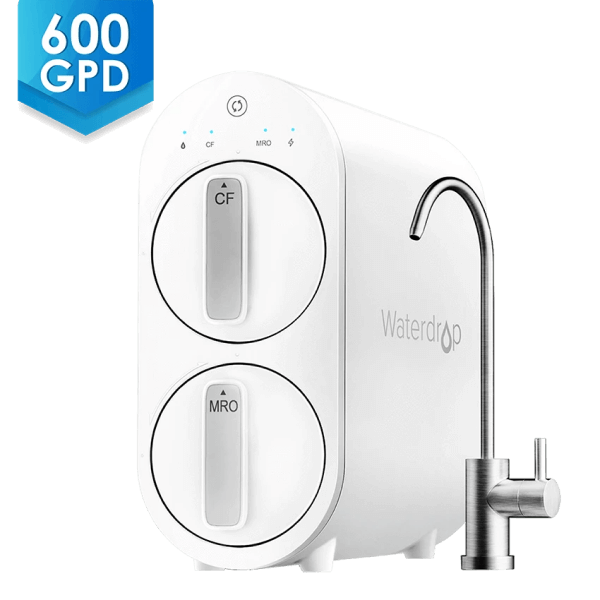
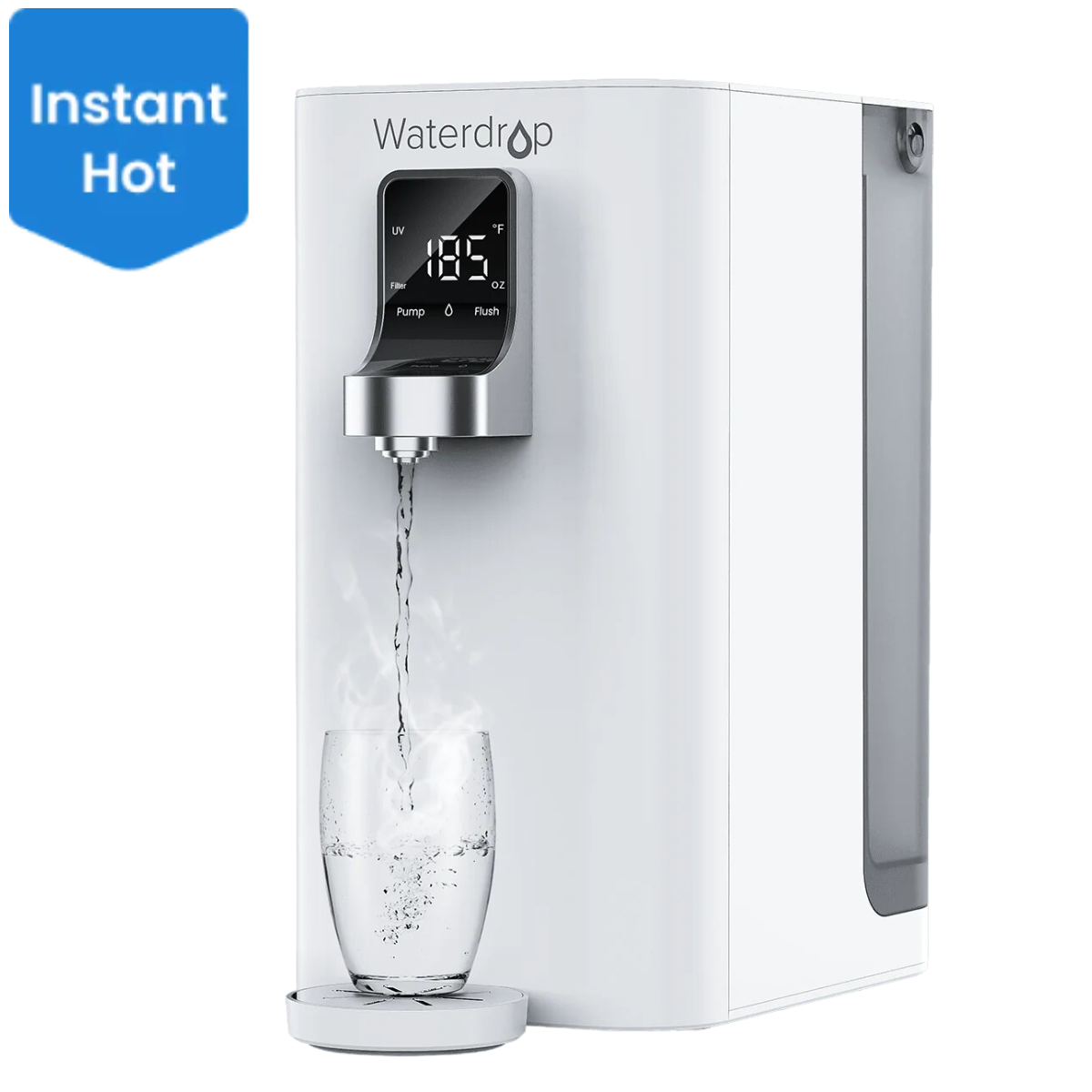
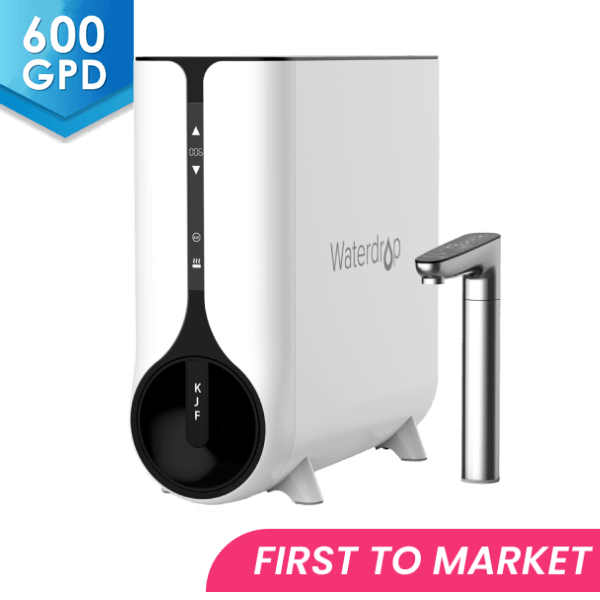
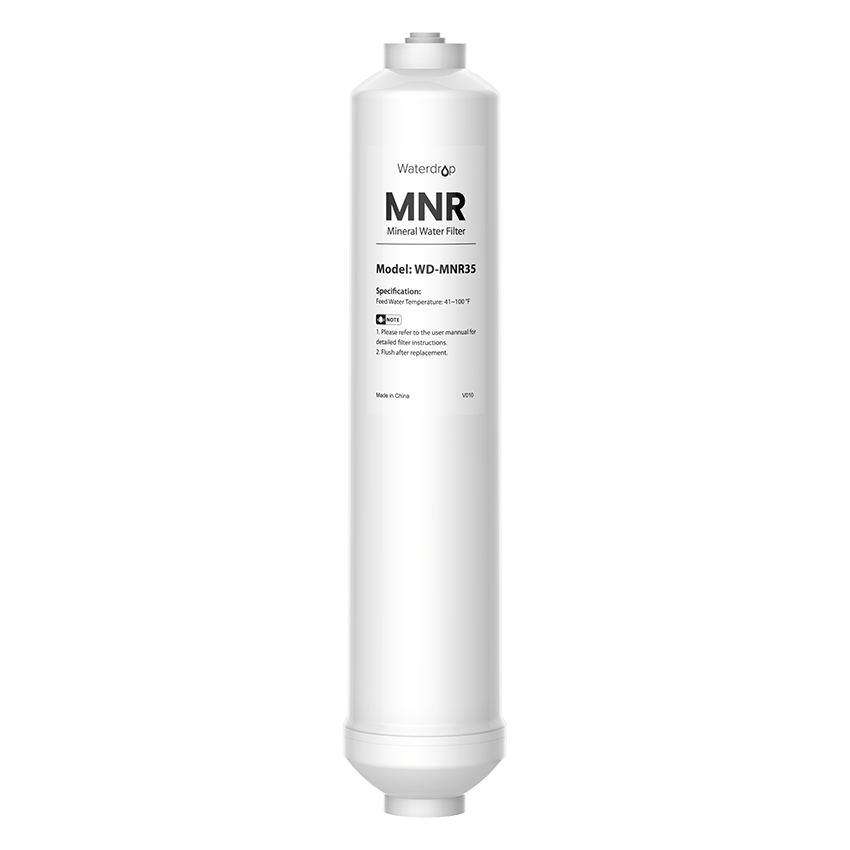


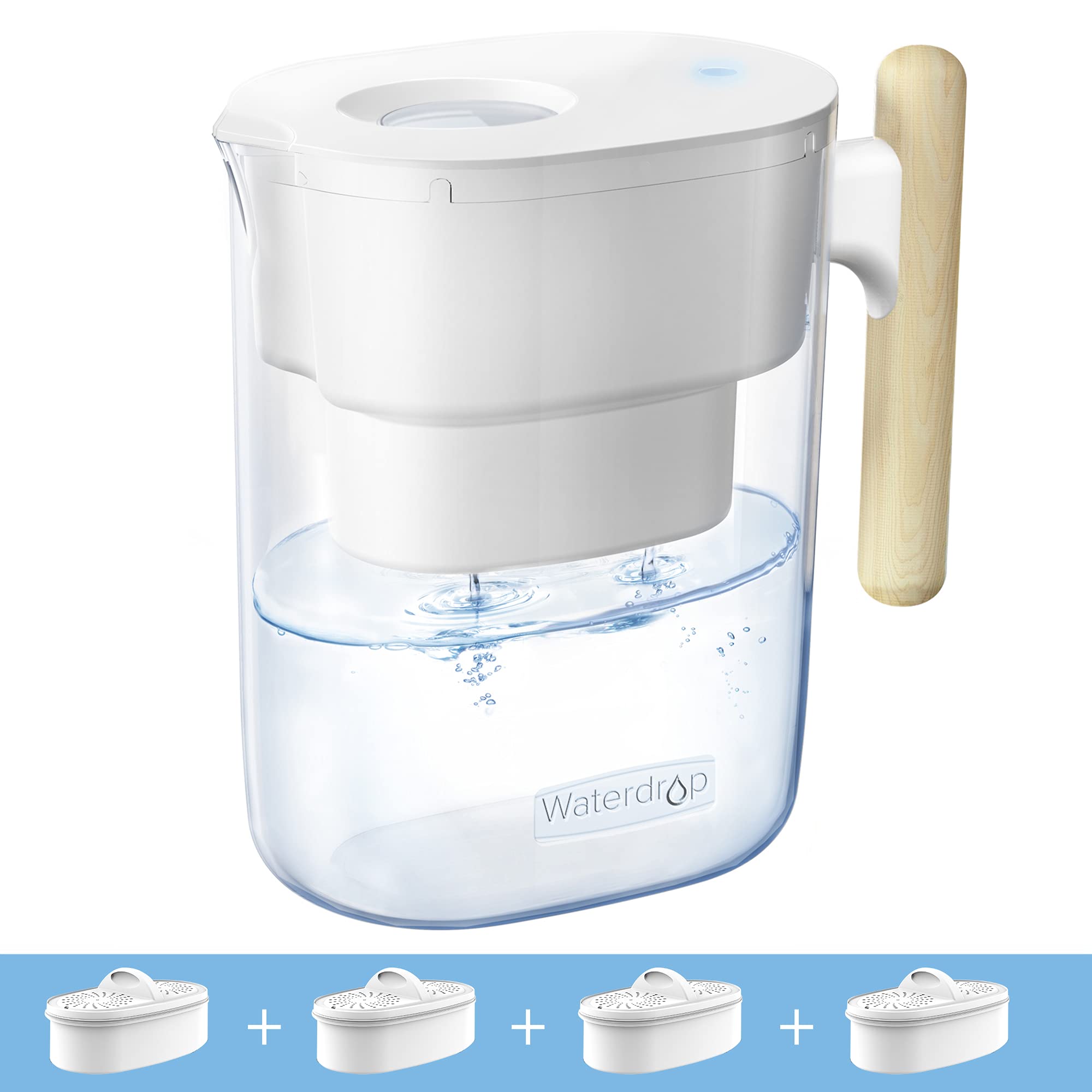
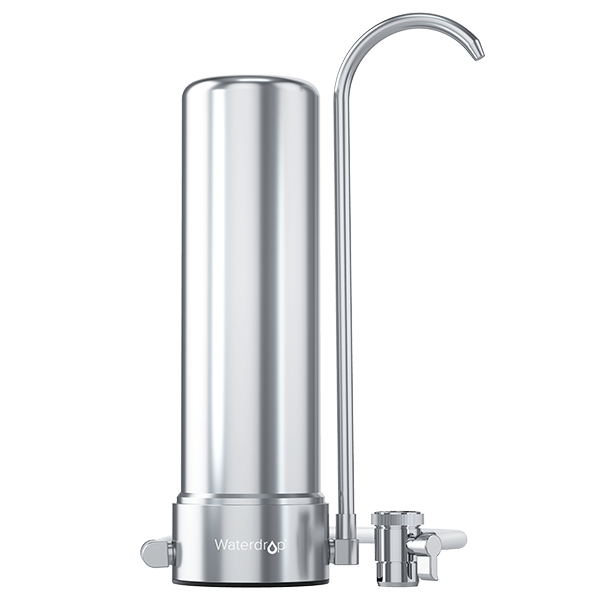
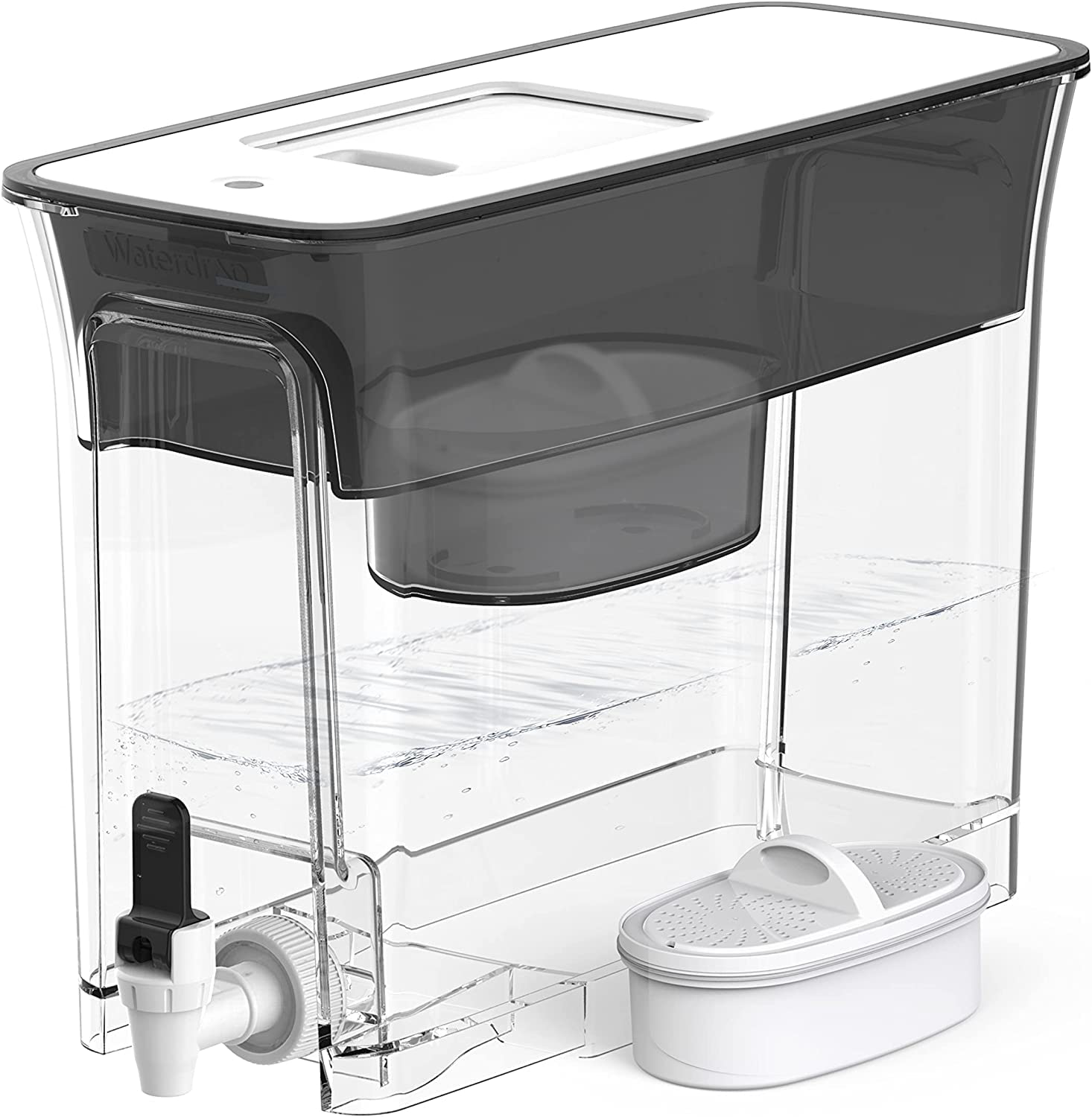
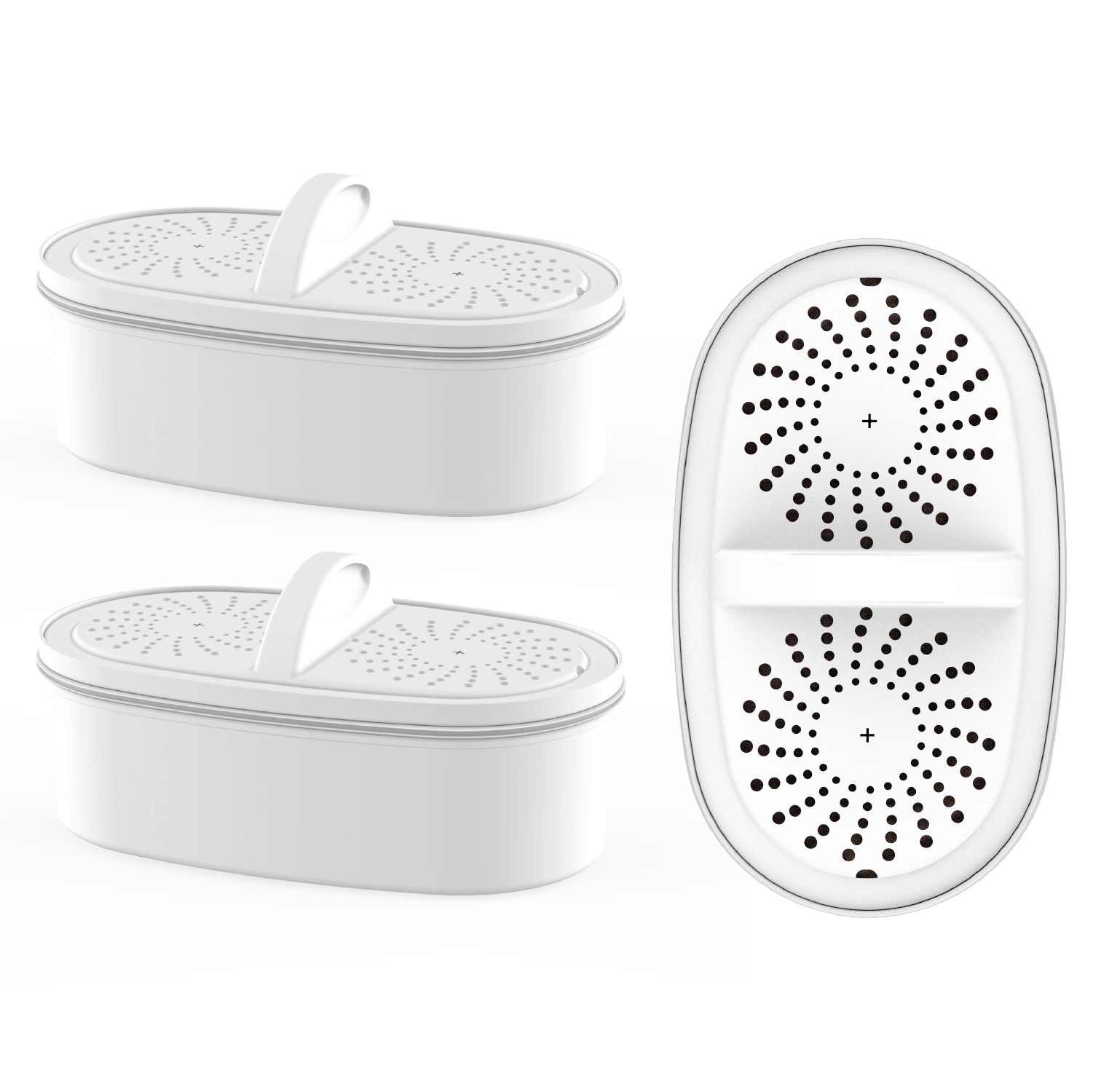
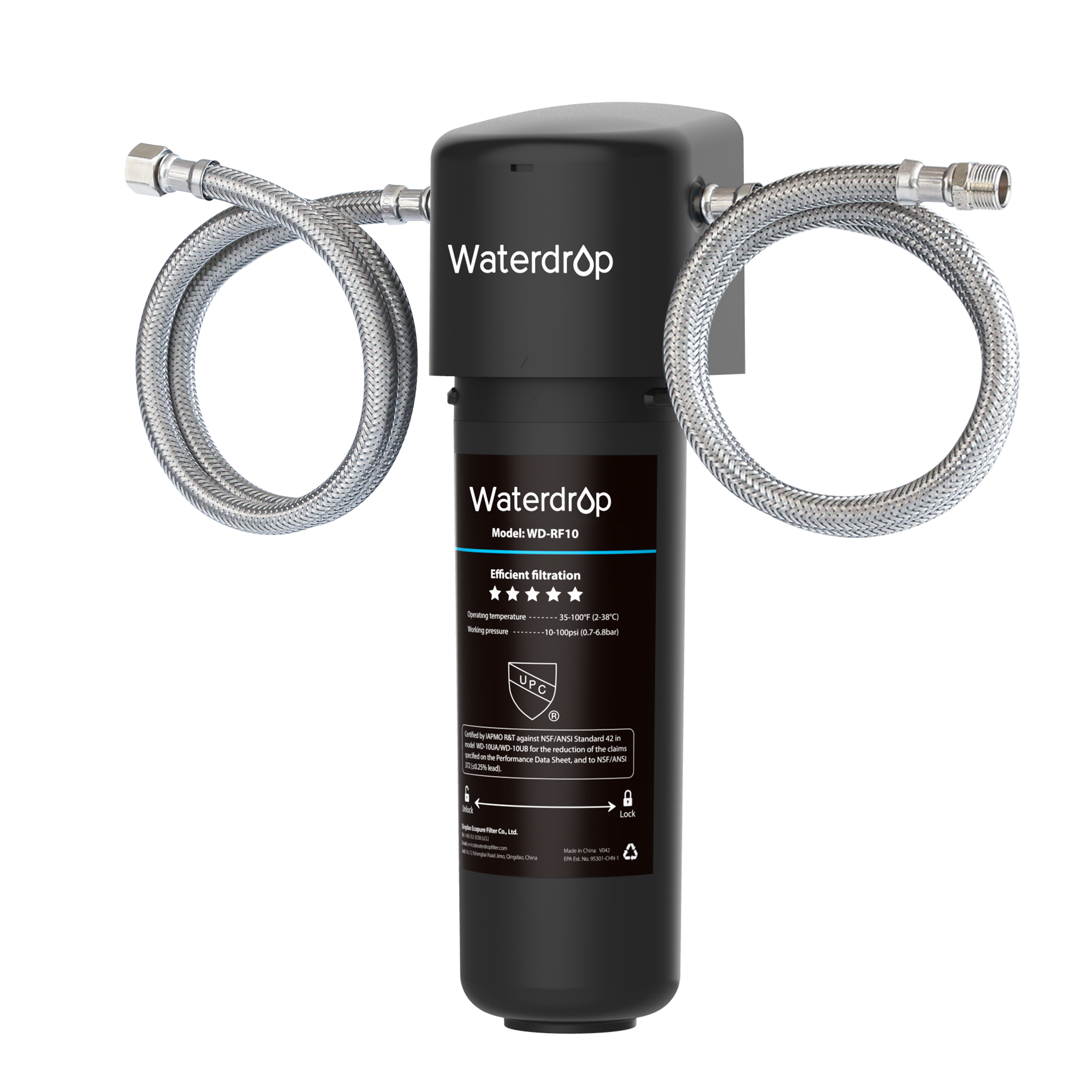
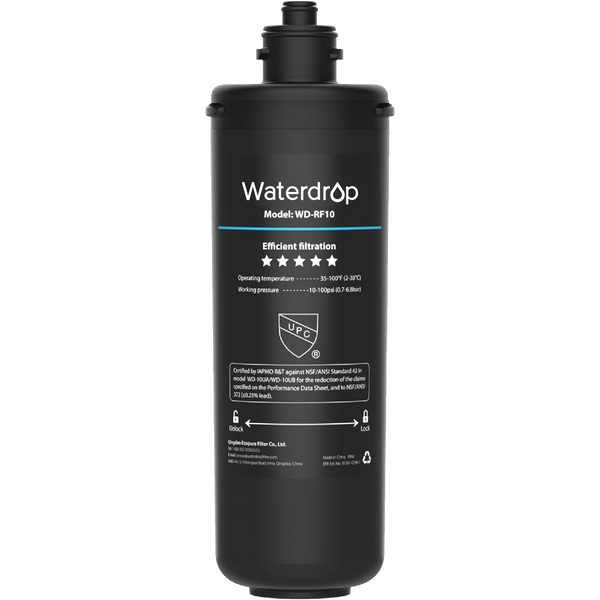
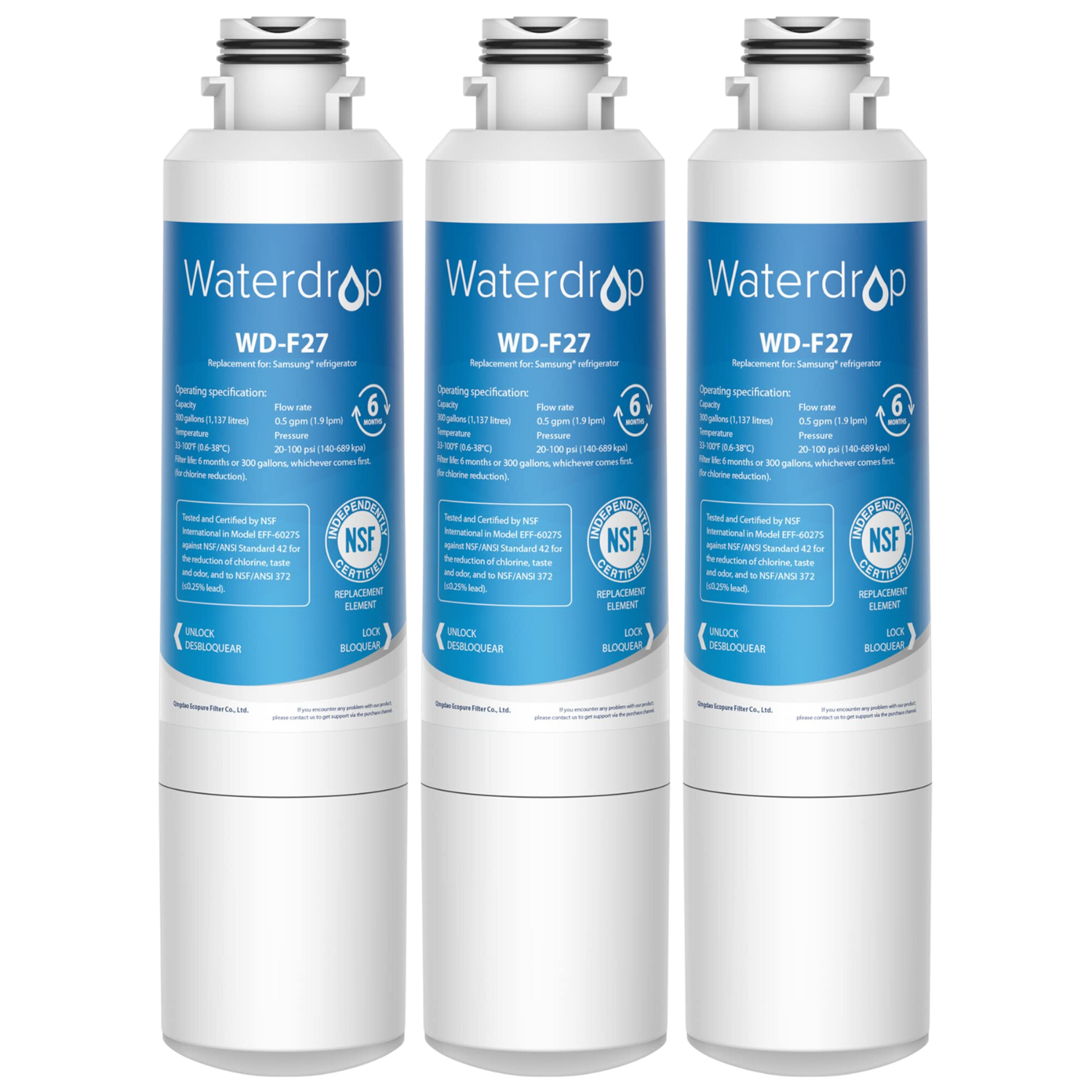
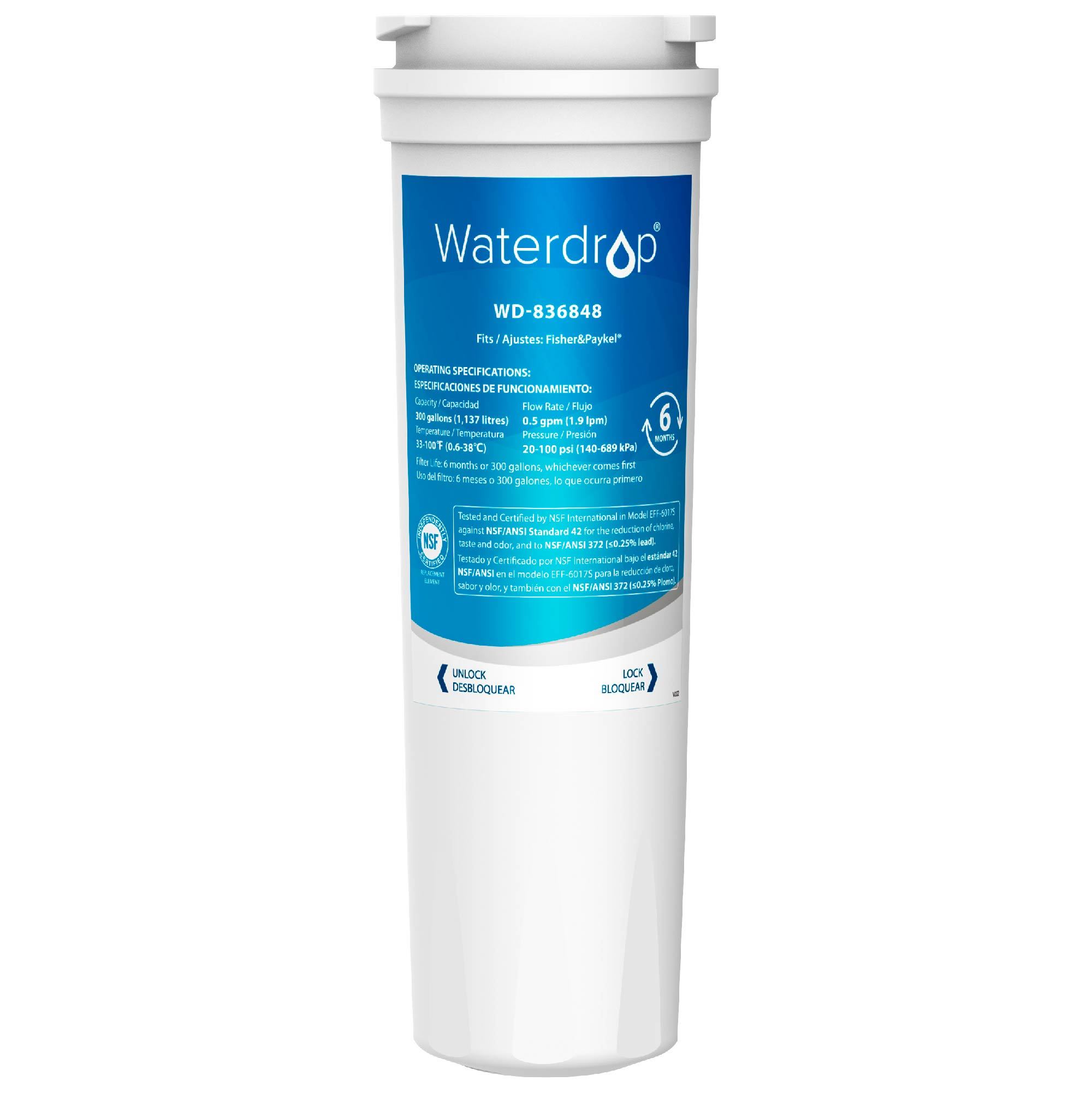
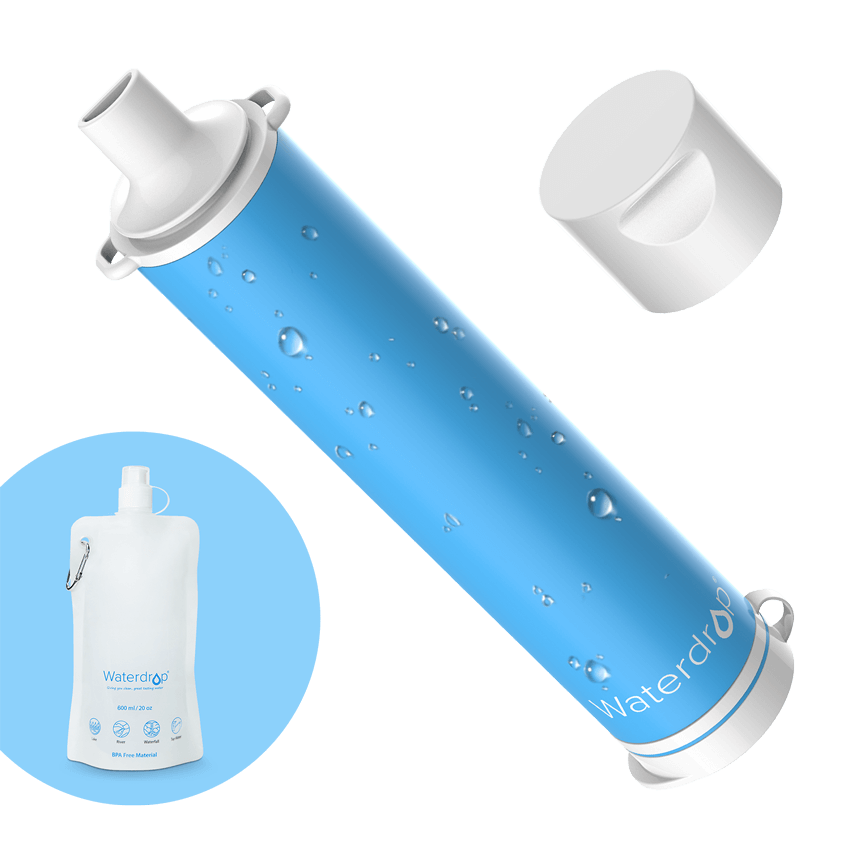
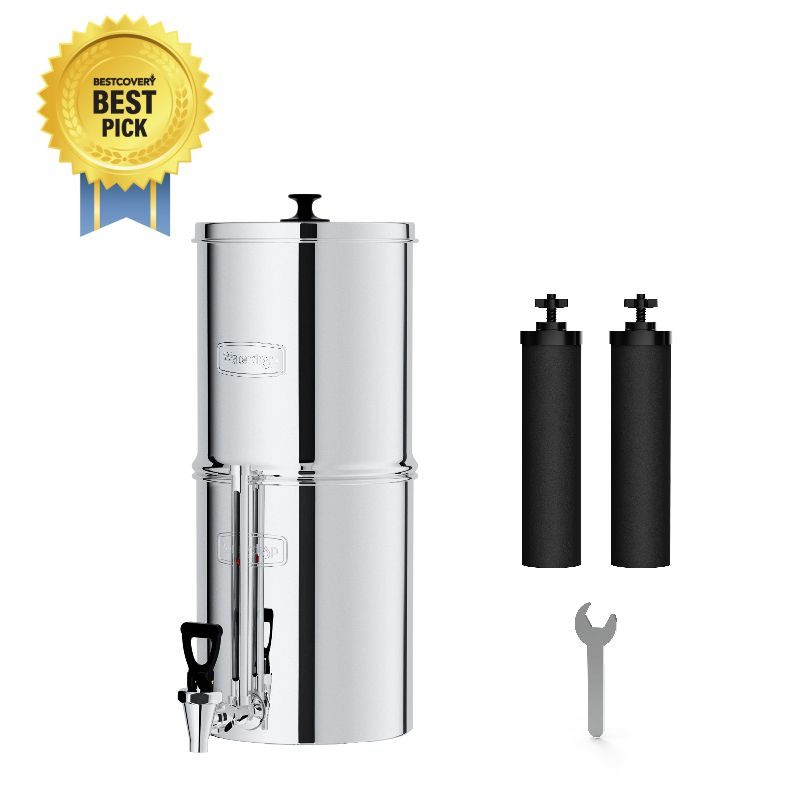















The following claims have not been tested and certified by NSF: compatibility claims.
The above statement is accordance with the NSF General Policy 25. Please note the certification information is only applicable to Waterdrop, not representing other brands on this page.